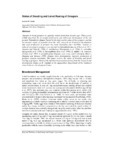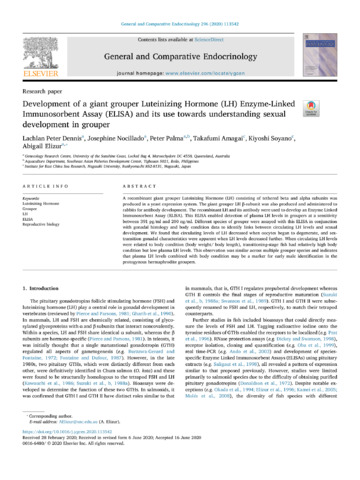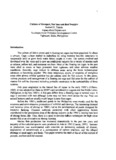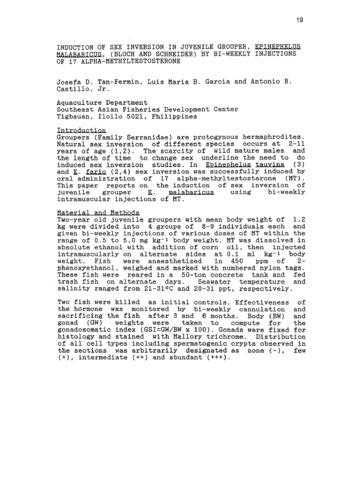Status of breeding and larval rearing of groupers

ရှာဖွေ/ဖွင့်ပါ။
ရက်စွဲ
2002စာရေးသူ
Page views
975
Share
စိတ္တဇ
Attempts to breed groupers in captivity started about four decades ago. Ukawa et al. (1966) described the successful fertilization and embryonic development of the red grouper Epinephelus akaara. Fueled by the high market value of live groupers and the inconsistent supply of juveniles from the wild, research on broodstock development and seed production of grouper has been intensified since the1980s. Natural or induced spawning in groupers was reported in Epinephelus tauvina (Chen et al. 1977, Hussain and Higuchi, 1980), E. malabaricus (Ruangpanit et al. 1986), E. salmoides (Kungvankij et al. 1986), E. fuscoguttatus (Lim et al. 1990), E. suillus (=E. coioides) (Toledo et al. 1993), E. polyphekadion (Sugama, pers. com), and Cromileptes altivelis (Sugama and Ikenoue 1999). Despite these developments, hatchery production of groupers remains unreliable. This paper reviews the status of breeding and larval rearing of groupers. Much of the information presented derives from the research and development studies on E. coioides at the Aquaculture Department of the Southeast Asian Fisheries Development Center.
Suggested Citation
Toledo, J. D. (2002). Status of breeding and larval rearing of groupers. In Report of the Regional Workshop on Sustainable Seafarming and Grouper Aquaculture, Medan, Indonesia, 17-20 April 2000. Collaborative APEC Grouper Research and Development Network (FWG 01/99) (pp. 47-54). Bangkok, Thailand: Network of Aquaculture Centres in Asia-Pacific.
ဘာသာရပ်
စုစည်းမှုများ စုစည်းမှုများ
Related items
Showing items related by title, author, creator and subject.
-
Development of a giant grouper Luteinizing Hormone (LH) Enzyme-Linked Immunosorbent Assay (ELISA) and its use towards understanding sexual development in grouper
Peter Dennis, Lachlan; Nocillado, Josephine; Palma, Peter; Amagai, Takafumi; Soyano, Kiyoshi; Elizur, Abigail (Elsevier, 2020-07-13)A recombinant giant grouper Luteinizing Hormone (LH) consisting of tethered beta and alpha subunits was produced in a yeast expression system. The giant grouper LH β-subunit was also produced and administered to rabbits ... -
Culture of grouper, sea bass and red snapper
Toledo, Joebert D. (University of the Philippines Aquaculture Society, Inc., 2001)Marine fish production has increased dramatically in the past ten years and majority of the cultured species were produced in Asia in 1992. Increase in production was accompanied with concerns on increasing outbreak of ... -
Induction of sex inversion in juvenile grouper, Epinephelus malabaricus, (Bloch and Schneider) by bi-weekly injections of 17 alpha-methyltestosterone
Tan-Fermin, Josefa D.; Garcia, LM; Castillo, Antonio R. Jr. (Society for the Study of Endocrinology, Metabolism and Reproduction, University of Hong Kong, 1989)Groupers (Family Serranidae) are protogynous hermaphrodites. Natural sex inversion of different species occurs at 2-11 years of age . The scarcity of wild mature males and the length of time to change sex underline the ...



